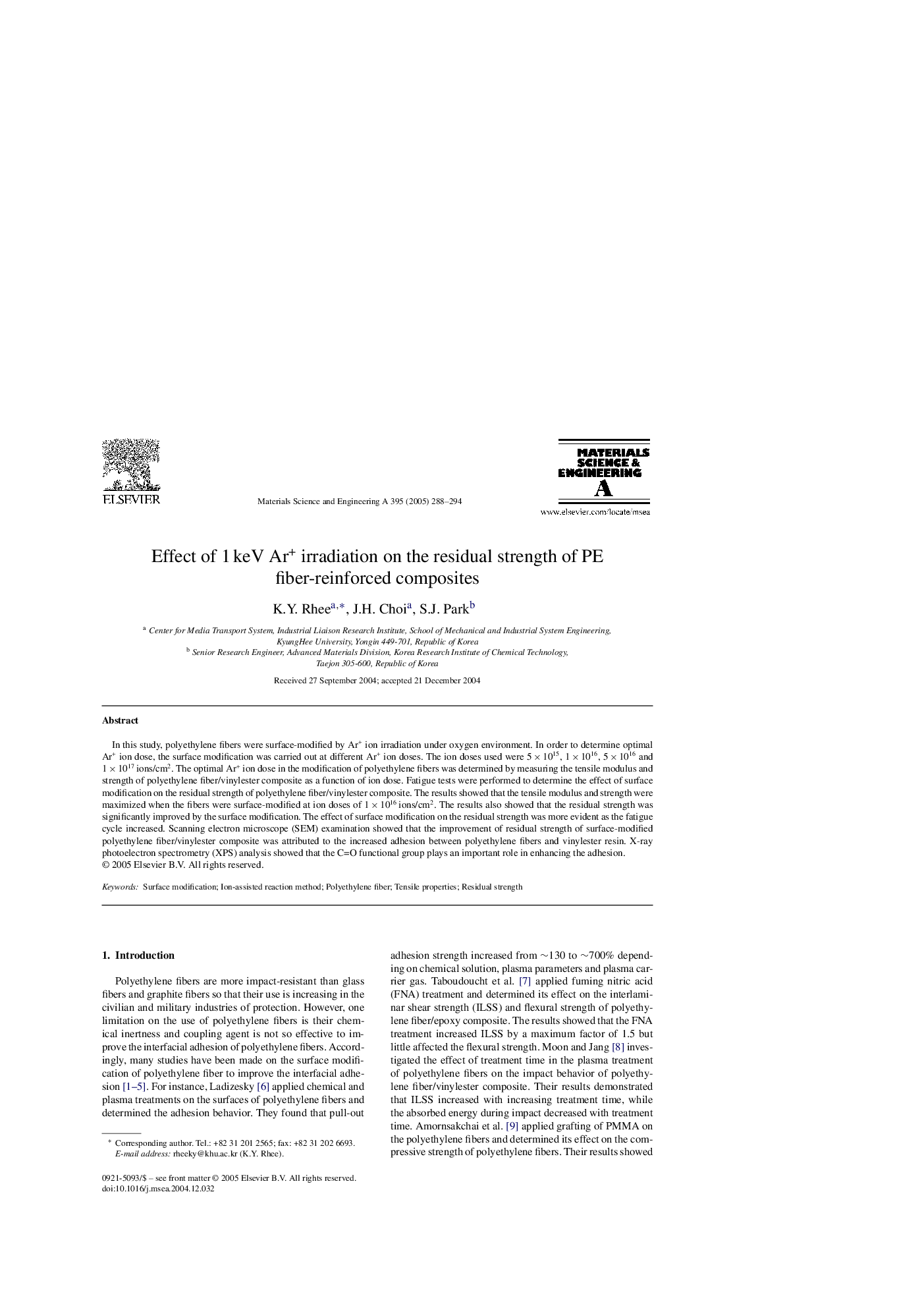| Article ID | Journal | Published Year | Pages | File Type |
|---|---|---|---|---|
| 9796410 | Materials Science and Engineering: A | 2005 | 7 Pages |
Abstract
In this study, polyethylene fibers were surface-modified by Ar+ ion irradiation under oxygen environment. In order to determine optimal Ar+ ion dose, the surface modification was carried out at different Ar+ ion doses. The ion doses used were 5Â ÃÂ 1015, 1Â ÃÂ 1016, 5Â ÃÂ 1016 and 1Â ÃÂ 1017Â ions/cm2. The optimal Ar+ ion dose in the modification of polyethylene fibers was determined by measuring the tensile modulus and strength of polyethylene fiber/vinylester composite as a function of ion dose. Fatigue tests were performed to determine the effect of surface modification on the residual strength of polyethylene fiber/vinylester composite. The results showed that the tensile modulus and strength were maximized when the fibers were surface-modified at ion doses of 1Â ÃÂ 1016Â ions/cm2. The results also showed that the residual strength was significantly improved by the surface modification. The effect of surface modification on the residual strength was more evident as the fatigue cycle increased. Scanning electron microscope (SEM) examination showed that the improvement of residual strength of surface-modified polyethylene fiber/vinylester composite was attributed to the increased adhesion between polyethylene fibers and vinylester resin. X-ray photoelectron spectrometry (XPS) analysis showed that the C=O functional group plays an important role in enhancing the adhesion.
Related Topics
Physical Sciences and Engineering
Materials Science
Materials Science (General)
Authors
K.Y. Rhee, J.H. Choi, S.J. Park,
